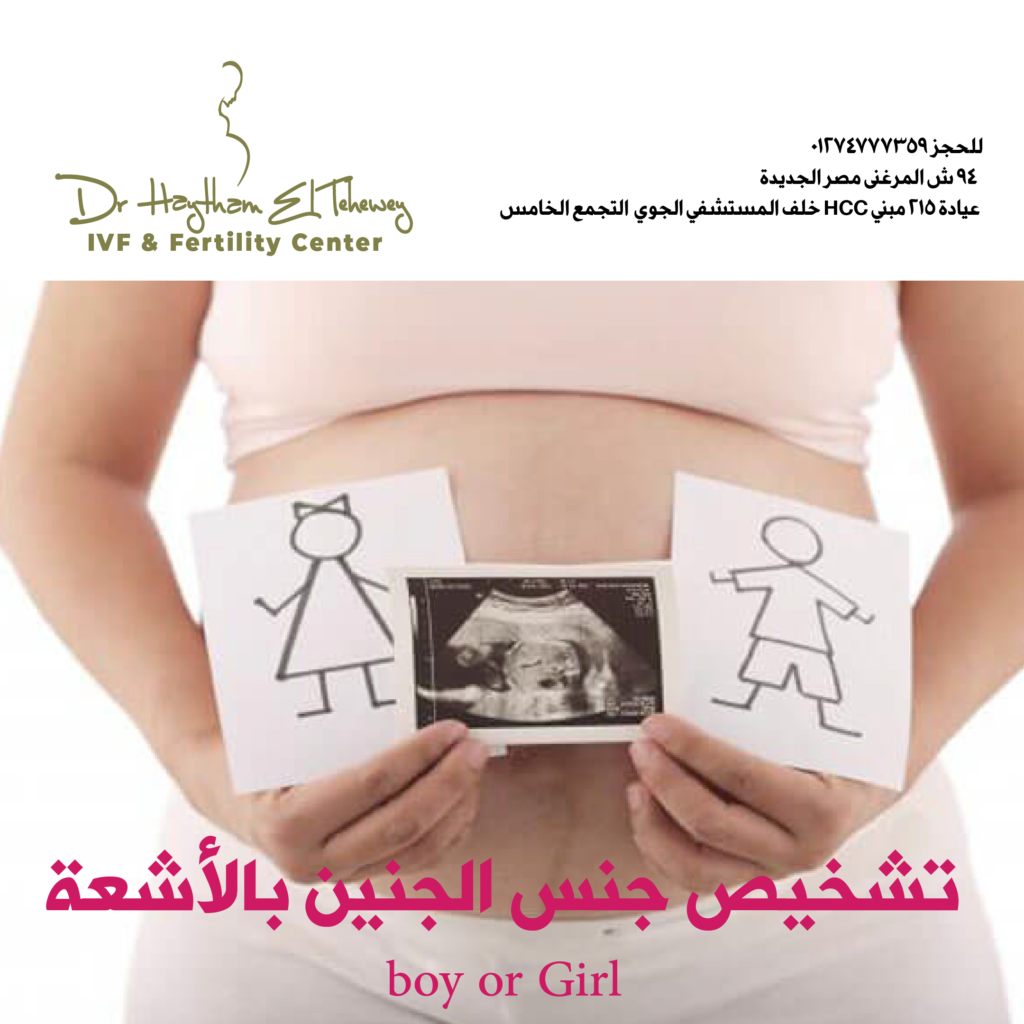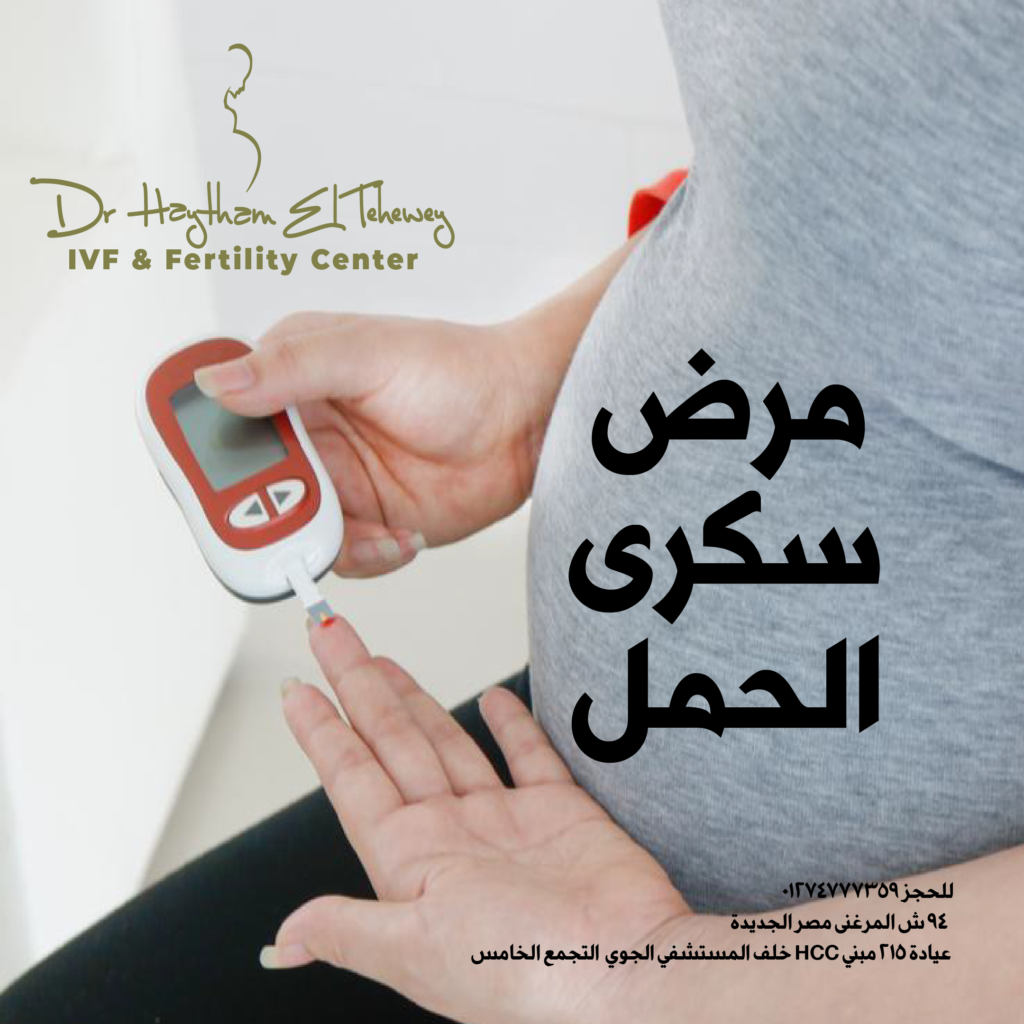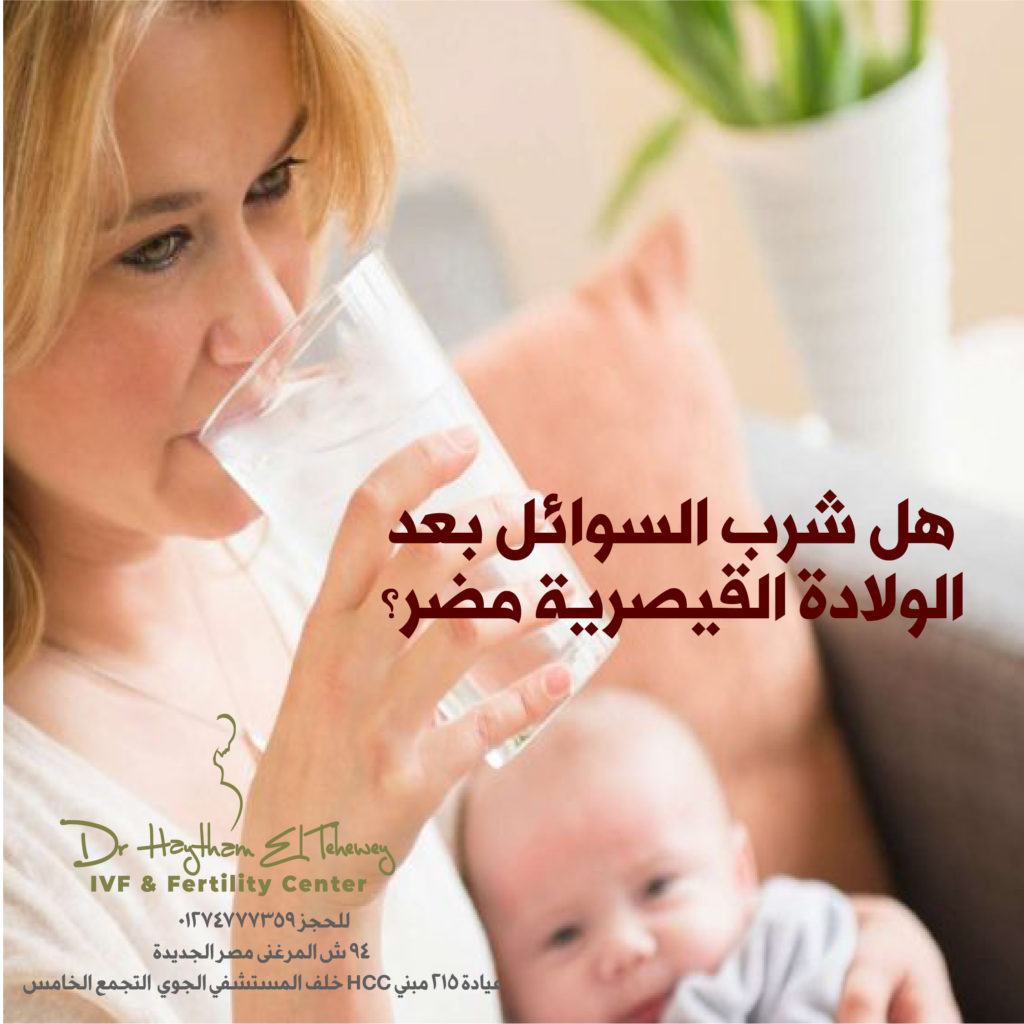Placenta accreta causes no symptoms during pregnancy
Placenta accreta causes no symptoms during pregnancy Read More »
Placenta accreta causes no symptoms during pregnancy, although vaginal bleeding may occur during the third trimester.
Placenta accreta is detected during a routine ultrasound.
✨ Reasons:
Placenta accreta is thought to be associated with abnormalities of the uterine lining, usually due to scarring after a C-section or other uterine surgery. Sometimes it occurs without previous uterine surgery.
✨ Risk factors:
1 -Previous uterine surgery.
2-Place the placenta if the placenta covers the cervix.
3 -age of the mother.
Placenta accreta causes no symptoms during pregnancy Read More »

Basically appropriate management results in improved outcomes, demonstrating the importance of proper diagnosis and treatment. In women with hypothyroidism, levothyroxine is titrated to achieve a goal serum stimulating hormone level less than 2.5 mIU per L. The preferred treatment is antithyroid medications, with a goal of maintaining a serum free thyroxine level in the upper one-third of the normal range.
Also Postpartum is the most common form of postpartum dysfunction and may present as hyper. Symptomatic treatment is recommended for the former; levothyroxine is indicated for the latter in women who are symptomatic, breastfeeding, or who wish to become pregnant.
Generally On the other hand, hypothyroidism may also affect the safety of pregnancy and the health of the fetus, such as miscarriage, premature birth, affecting the mental development of the fetus and high blood pressure during pregnancy.
For example



Prof. Haiytham Al-Tehewy
Fem Clinic
Heliopolis: 94 El Merghany Street in front of the Girls College metro station
Fifth Settlement: Clinic 215, second floor, HCC building, behind the Air Hospital – New Cairo
For inquiries and reservations 
An ultrasound can provider evaluate your baby’s growth. An ultrasound is an imaging technique that uses sound waves to produce images of the fetus inside the womb. And can help your health care provider evaluate your baby’s growth and development and monitor your pregnancy. In some cases, a fetal ultrasound is used to evaluate potential problems or help confirm a diagnosis.
An ultrasound to evaluate your baby’s growth ,It is one of the few ways your pregnancy care provider can see and hear your baby. It can help them determine how far along you are in pregnancy, if your baby is growing properly or if there are any potential problems with the pregnancy. its may occur at any time in pregnancy depending on what your provider is looking for.
Generally prenatal ultrasound does two things:
In most pregnancies, ultrasounds are positive experiences and pregnancy care providers don’t find any problems. However, there are times this isn’t the case and your provider detects birth disorders or other problems with the pregnancy.
Also Reasons why your provider performs a prenatal ultrasound are to:
Also an important tool to help providers screen for congenital conditions (conditions your baby is born with). A screening is a type of test that determines if your baby is more likely to have a specific health condition. Your provider also uses ultrasound to guide the needle during certain diagnostic procedures in pregnancy like amniocentesis or CVS (chorionic villus sampling).
at the present time part of a biophysical profile (BPP), a test that combines ultrasound with a nonstress test to evaluate if your baby is getting enough oxygen.
 Fem Clinic
Fem Clinic 00201274777359
00201274777359An ultrasound to evaluate your baby’s growth Read More »
Glucose tolerance during Pregnancy ,The glucose challenge test, also called the one-hour glucose tolerance test, measures the body’s response to sugar, called glucose. The glucose challenge test is done during pregnancy. The purpose of this test is to check for diabetes that develops during pregnancy. That condition is called gestational diabetes.
The test is done in two steps. The first is drinking a sugary drink. One hour later, blood sugar is measured. The results show whether gestational diabetes might be present.
If the test results fall outside the standard range, more testing may be needed to diagnose gestational diabetes.
The glucose challenge test is used to check for gestational diabetes during pregnancy.
People at average risk of gestational diabetes usually have this test done during the second trimester, generally between 24 and 28 weeks of pregnancy.
People at high risk of gestational diabetes might have this test done earlier than 24 to 28 weeks. Risk factors may include:
The first is drinking a sugary drink. One hour later, blood sugar is measured. The results show whether gestational diabetes might be present.
If the test results fall outside the standard range, more testing may be needed to diagnose gestational diabetes.
Haitham_Al-Tayawi #Pregnancy #Birth #ICSI #Women’s Health #Breastfeeding #Uterine #Men’s Infertility # IVF # IUI # Abortion # Al Ahly # Egyptian # Rights
Glucose tolerance during Pregnancy Read More »
It is done to remove amniotic fluid and cells from the uterus for testing or treatment. Amniotic fluid surrounds and protects a baby during pregnancy. Its can provide useful information about a baby’s health. But it’s important to know the risks of test — and be prepared for the results
Also this test can be done for a number of reasons:
Generally reasons to consider test include:
however It is the passage of a needle that pulls out, an eye, for prenatal diagnosis, chromosomal abnormalities and fetal injury, as well as a sex indication. Being the DNA of the fetus.
Prof. Haitham Al-Tahwi Fam Clinic Center
Heliopolis: 94 El Merghany Street, in front of the Girls College metro station
Fifth Settlement: Clinic 215, second floor, HCC building, behind the Air Hospital – New Cairo
For inquiries and reservations 00201274777359
Amniotic fluid test Read More »
The difference in the blood type between negative and positive for both spouses in pregnancy and the cause of pregnancy and the cause or pregnancy and the reason, put it in their bodies, and return them.
Problems can occur when the mother is Rh- and the baby is Rh+. This mismatch in blood type is often referred to as Rh incompatibility.
This mismatch doesn’t cause any problems for the first pregnancy. But it can lead to problems in later pregnancies.
During birth, the blood of mother and baby will mix. In a mom that is Rh-, her immune system won’t recognize the Rh+ in the baby’s blood. The mom’s immune system will think these definitely don’t belong – her own blood cells don’t have Rh!
Later after birth, the Rh- mom’s immune system will create antibodies that will attack any Rh+ blood they see in the future. It takes some time for the mom to make these antibodies, so these antibodies are not usually an issue during the first pregnancy.
But in future pregnancies, if the mom’s immune system sees any Rh proteins, they are treated like foreign invaders! It will attack any Rh+ blood cells, even those of the mom’s own unborn baby. This is referred to as Rh disease of the newborn.
In situations where a mother has Type O blood, and the baby has A, B, or AB blood, the mother’s immune system will recognize the baby’s blood as foreign. The mother’s immune system will then create special antibodies that attack the ABO group of the baby’s blood cells, just like in Rh incompatibility.
But these antibodies are different than the antibodies that attack the Rh proteins!

finally The difference in the blood type between negative and positive for both spouses in pregnancy and the cause of pregnancy and the
It’s always important to see a doctor before having a baby! Even in cases where blood group incompatibility is a problem, a doctor can help you to figure out the best plan forward to keep you and your baby happy and healthy.
Fam Clinic Center
Heliopolis: 94 El Merghany Street, in front of the Girls College metro station
Fifth Settlement: Clinic 215, second floor, HCC building, behind the Air Hospital – New Cairo
For inquiries and reservations 00201274777359
#Haitham_Al-Bahawi #Pregnancy #Birth #ICSI #Women’s Health #Breastfeeding #Uterine #Men Infertility # IVF # IVF # Abortion # Good Morning # UAE # Jordan # Misurata
Is it a common misconception that drinking water after caesarean section leads to sagging abdomen or harms the mother’s health?
However, drinking water or any fluids is delayed right after CS because you are expected to lie down flat on the bed at least eight hours after the operation to avoid post anesthesia side effect of a spinal headache.
With this, since you are in supine and you just got an operation, your bowels are not yet fully functioning.
If you drink water lying down, you might aspirate it towards your lungs and you will have a difficulty of breathing. If you take it within eight hours and you raise your head to drink it, you may experience a spinal headache plus you will experience vomiting and possibly abdominal pain because your intestines are not yet ready to take it in.
You may try to sip out water with wet cotton just so to wet your lips and quench a little desire to drink.
There are many myths about drinking water after a cesarean section, as some women fear drinking water after giving birth so that the mother does not get puerperal fever, and so that the first period after childbirth goes well. Therefore, women often wonder about this matter, even though it is devoid of truth.
There are many myths about drinking water after a cesarean section, as some women are afraid of doing so after giving birth so that the mother does not get puerperal fever, and so that the first period of postpartum will pass well. Therefore, women often ask about this matter even though it is devoid of truth.
1 – Drinking water contributes to enhancing and regulating bowel movement and fighting constipation.
2 – It helps after a cesarean section to hydrate the body and protect it from dehydration.
3 – After a cesarean section, the mother achieves a rapid recovery.
4 – It speeds up metabolism and increases the burning rate, and therefore weight decreases.
5- It makes the mother active and energetic
Heliopolis - 94 El Merghany St., Cairo, Egypt
Fifth Settlement - HCC Building behind the Air Hospital - Clinic 215 Cairo , Egypt
For inquiries and reservations 00201274777359
#Pregnancy #Birth #ICSI #Women’s Health #Breastfeeding #Uterine #Men Infertility # IVF # IVF # Abortion # Good Morning # Cute Babies # Myths
drinking water after cesarean section Read More »
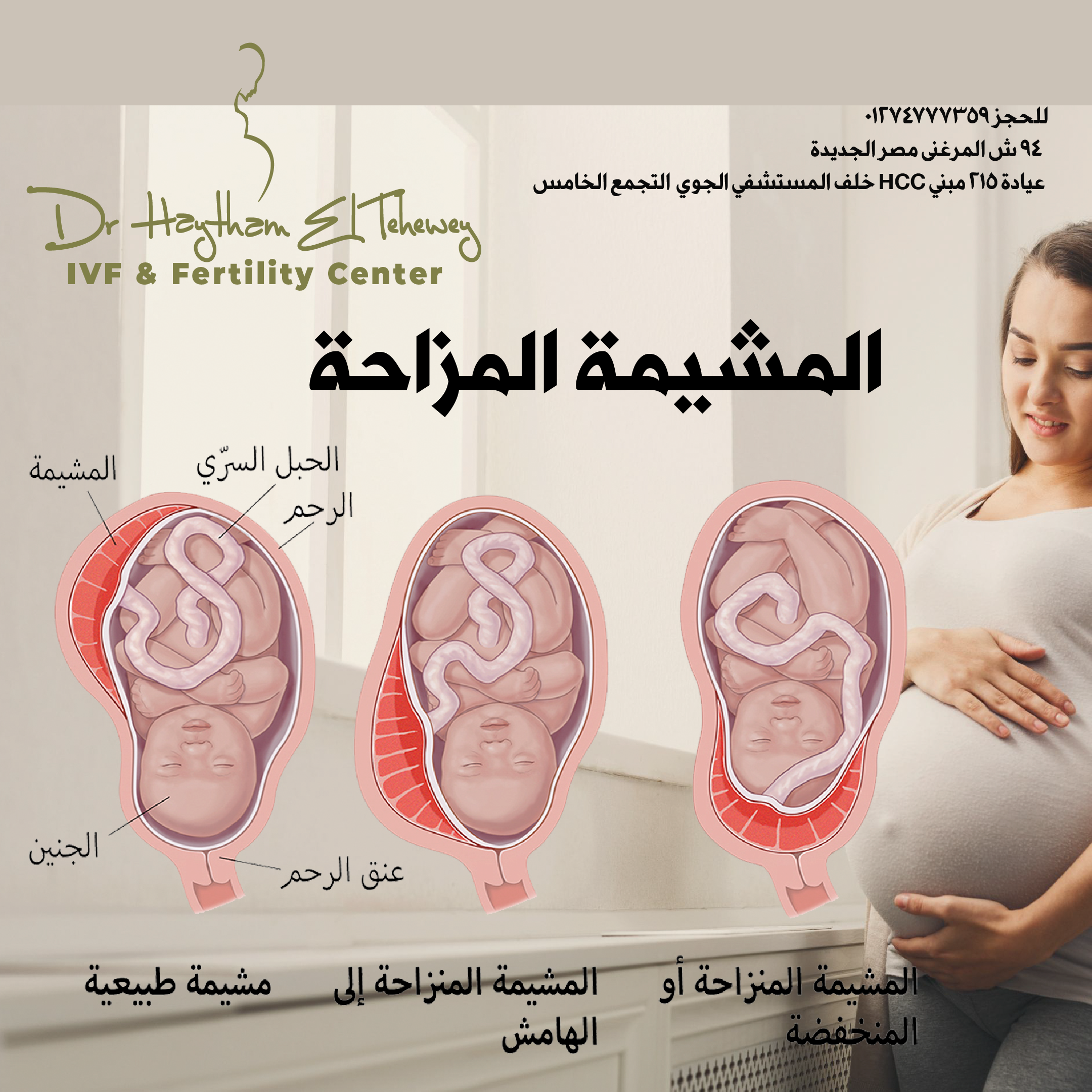
Types of placenta previa:
1️⃣ Total: When the placenta is completely cervical.
2️⃣ Upper part of the uterus.
3️⃣ Marginal: When the placenta terminates from the cervix, about 2 cm from the internal orifice of the cervix.
Women with placenta previa often present with painless, bright red vaginal bleeding. This commonly occurs around 32 weeks of gestation, but can be as early as late mid-trimester.[8] More than half of women affected by placenta praevia (51.6%) have bleeding before delivery.[9] This bleeding often starts mildly and may increase as the area of placental separation increases. Placenta praevia should be suspected if there is bleeding after 24 weeks of gestation. Bleeding after delivery occurs in about 22% of those affected.[2]
Women may also present as a case of failure of engagement of fetal head.[10]
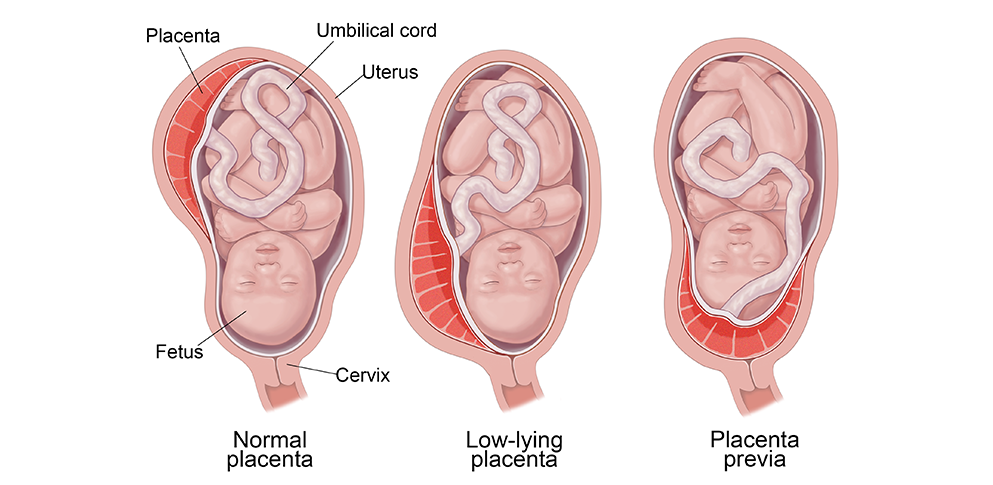
The exact cause of placenta previa is unknown. It is hypothesized to be related to abnormal vascularisation of the endometrium caused by scarring or atrophy from previous trauma, surgery, or infection. These factors may reduce differential growth of lower segment, resulting in less upward shift in placental position as pregnancy advances

The following have been identified as risk factors for placenta previa:
Placenta previa is itself a risk factor of placenta accreta. Alcohol use during pregnancy was previously listed as a risk factor, but is discredited by this article.
reservation@ivfategypt.com

Heliopolis - 94 El Merghany St., Cairo, Egypt
Fifth Settlement - HCC Building behind the Air Hospital - Clinic 215 Cairo , Egypt
Types of placenta previa Read More »

